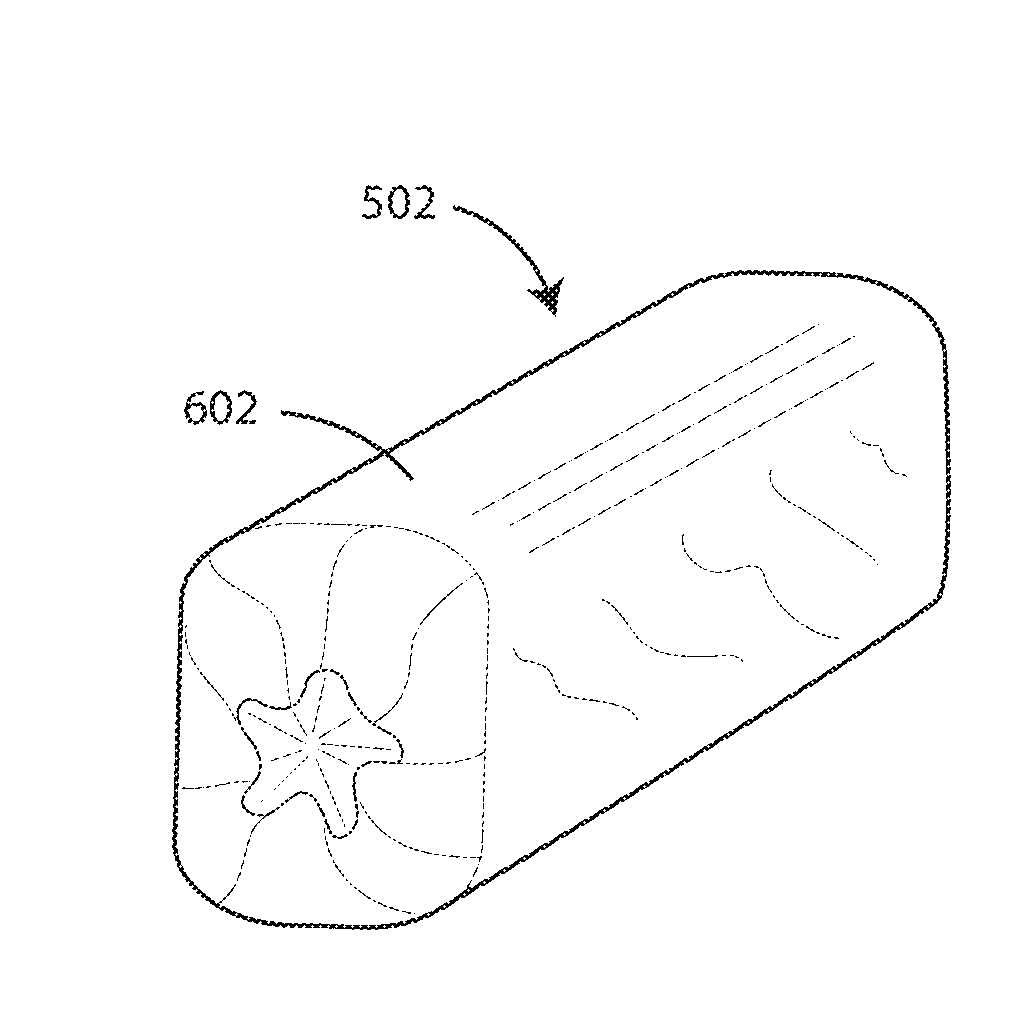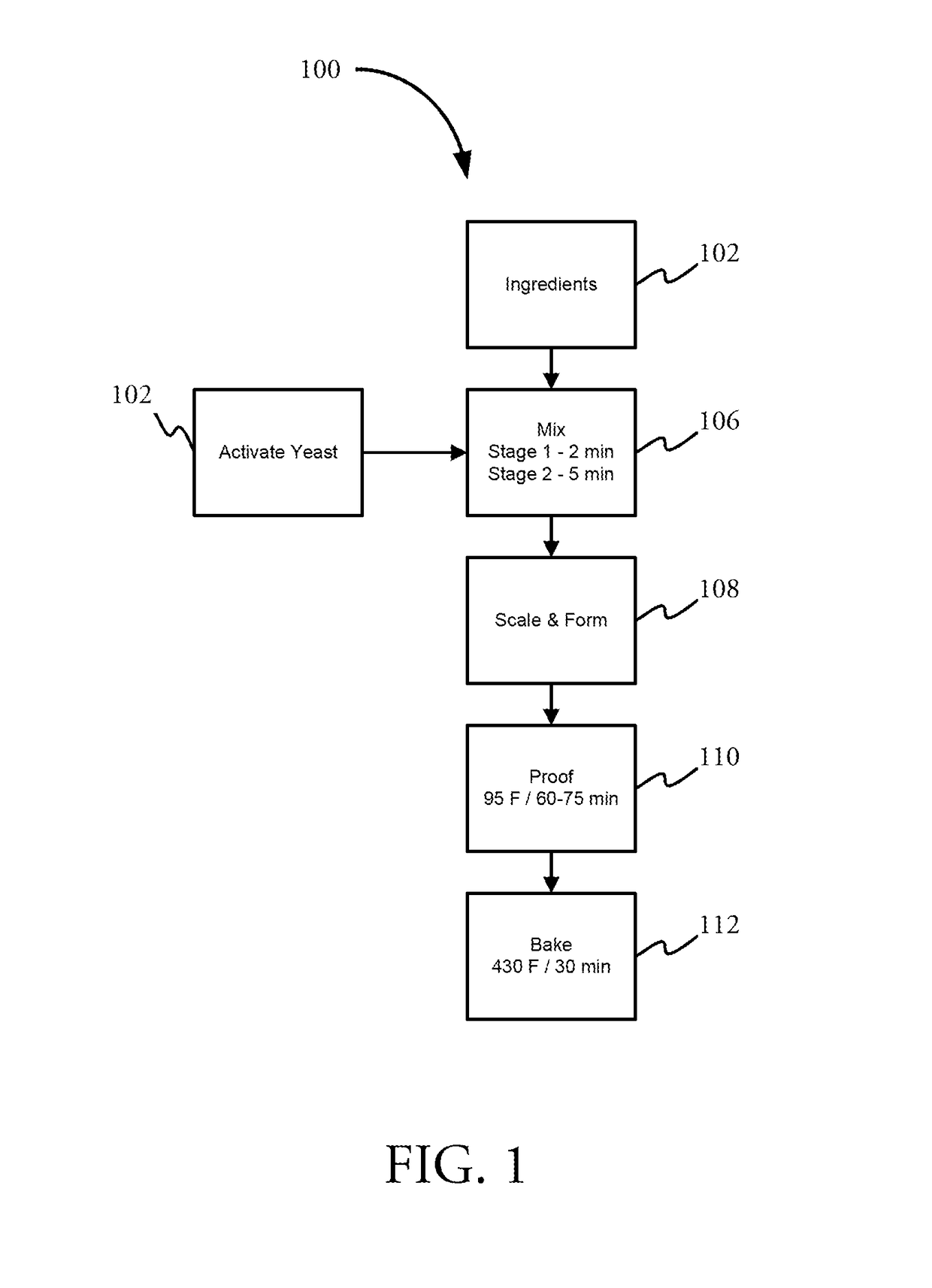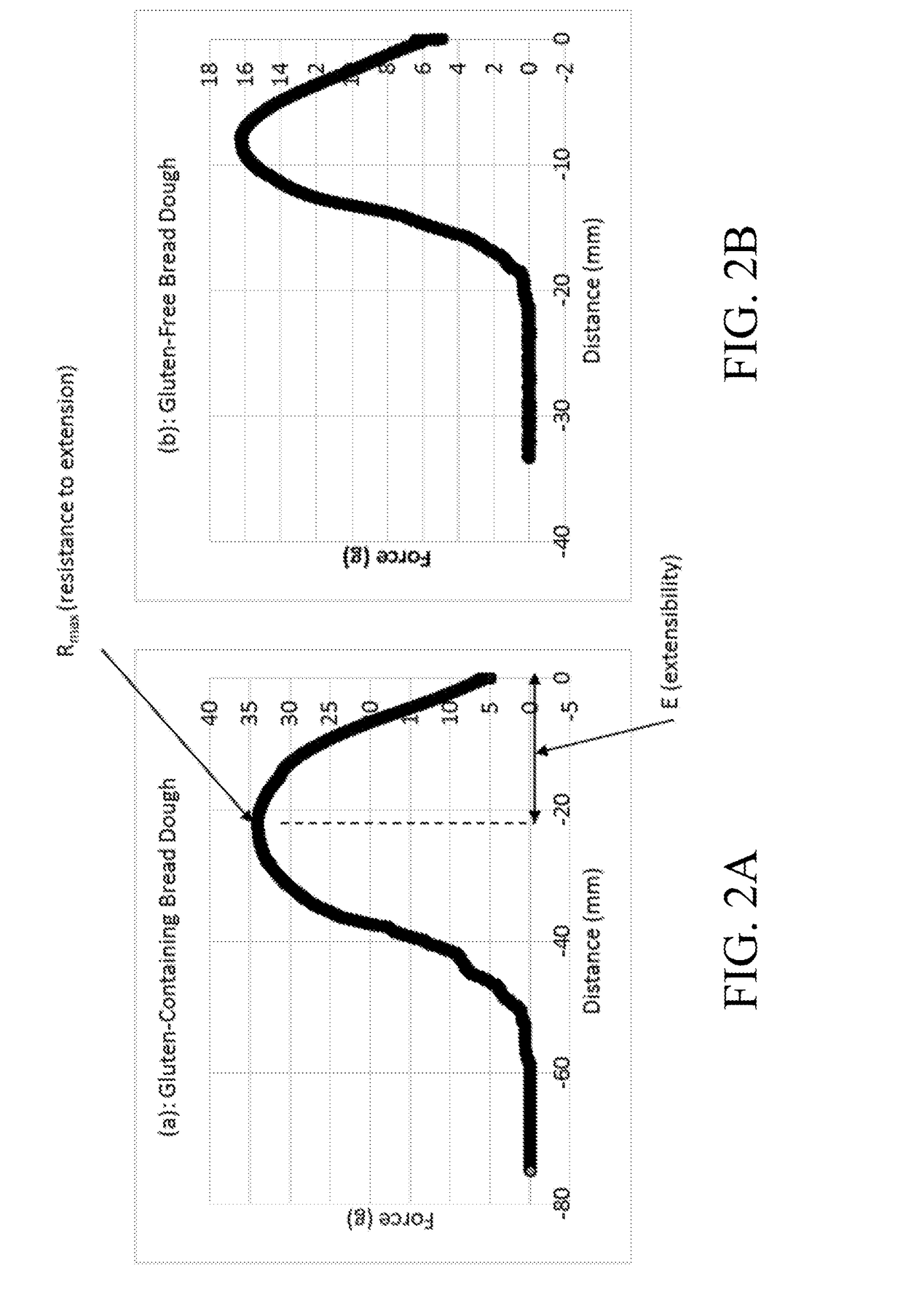Gluten-free compositions and methods for producing shelf-stable breads and other bakery products
a technology of compositions and compositions, applied in the field of gluten-free flour compositions, baked products, can solve the problems of poor machinability, difficult formulation and achievement of similar properties of gluten-free baked products, and large volume of breads
- Summary
- Abstract
- Description
- Claims
- Application Information
AI Technical Summary
Benefits of technology
Problems solved by technology
Method used
Image
Examples
example 1
ee Bread Formulation
[0086]In this example, an exemplary “gluten-free bread flour” composition is provided. The variations of the composition can be adopted for further product application.
Gluten-Free Bread Flour Composition% by WeightNative Starch40.0Native Waxy Starch0.5Modified (cross-linked) Starch42.5Dried Egg Whites5.0Non Fat Dry Milk4.0Psyllium Husk Fiber5.0HPMC3.0Total100%Amylose Content20.0Amylopectin Content58.0
example 2
Varying Amylose Content on Loaf Volume and Texture
[0087]In this experiment, the amylose content of the “Gluten-Free Flour” formulation of Example 1 was adjusted by substitution (12.5%, 25% and 50%) of a native wheat starch with a waxy corn starch (WCS). As such, the “control” formulation for this example is the formulation of Example 1. The other components in the gluten-free flour were kept constant.
[0088]The formulations were baked according to the procedure described in FIG. 1. The baking performance of these formulations were noted. The control and test formulation with 12.5% WCS substitution produced breads with good loaf volume and texture. However, at 25% and 50% substitution levels, the breads have lower loaf volumes, have collapsed concave structure, and gummy texture.
Test 1- 12.5%Test 2 - 25%Test 3 - 50%PropertyControlWCSWCSWCSAmylose (AM)20171410Amylopectin57.56062.565(AP)AM:AP1:2.91:3.51:4.51:6.5% Amylose—15%30%50%ReducedBakingGoodGoodPoorVery PoorPerformanceWCS = Waxy C...
example 3
al Properties of Gluten-Free Bread Dough
[0089]In this example, the rheological properties of gluten-free bread dough were measured using the Kieffer Dough and Gluten Extensibility Rig on the Texture Analyzer according to the method of Keiffer et al. (Correlations of the breadmaking performance of wheat flour with rheological measurements on a microscale, Journal of Cereal Science, 1998 27: 53-60). Control doughs (gluten-containing) were also prepared for rheological measurements. The dough strips were prepared by placing the dough in Teflon block and rested for 15-20 minutes. The measurements were made with hook probe at a speed of 3.3 mm / sec. The measurements recorded include: Rmax (resistance to extension, maximum force g) and extensibility until dough rupture to (extensibility—E, mm). A typical extensibility curve for gluten-free bread dough and a control bread dough are shown in FIGS. 2A and 2B.
[0090]The typical gluten-free bread dough has relatively lower resistance to extensio...
PUM
 Login to View More
Login to View More Abstract
Description
Claims
Application Information
 Login to View More
Login to View More - R&D
- Intellectual Property
- Life Sciences
- Materials
- Tech Scout
- Unparalleled Data Quality
- Higher Quality Content
- 60% Fewer Hallucinations
Browse by: Latest US Patents, China's latest patents, Technical Efficacy Thesaurus, Application Domain, Technology Topic, Popular Technical Reports.
© 2025 PatSnap. All rights reserved.Legal|Privacy policy|Modern Slavery Act Transparency Statement|Sitemap|About US| Contact US: help@patsnap.com



